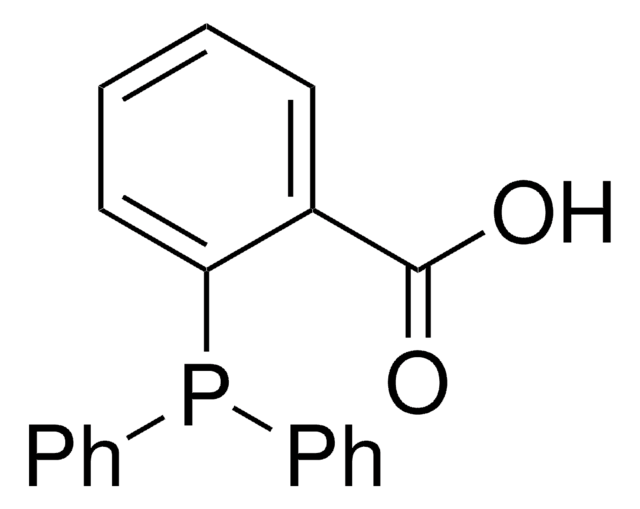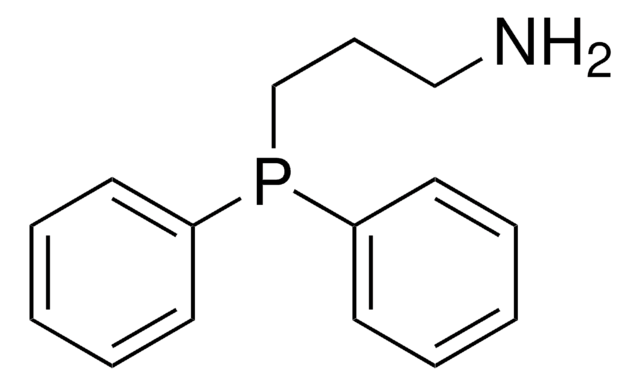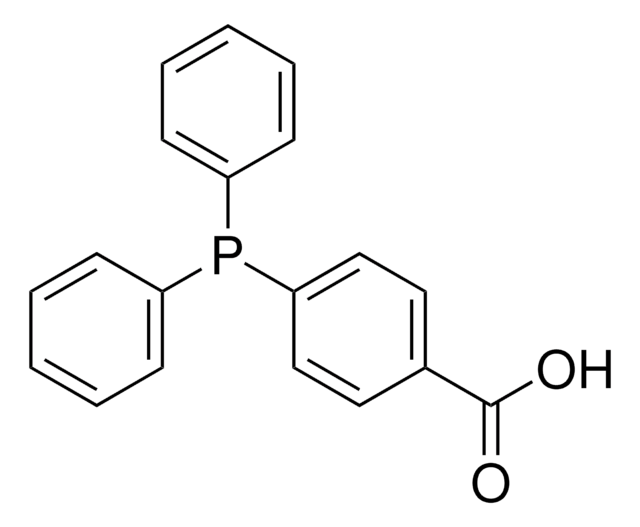715034
3-(Diphenylphosphino)propionsäure
97%
Synonym(e):
(2-Carboxyethyl)diphenylphosphine, 4,4-Diphenyl-4-phosphabutanoic acid
About This Item
Empfohlene Produkte
Assay
97%
Form
solid
Eignung der Reaktion
reaction type: Buchwald-Hartwig Cross Coupling Reaction
reaction type: Heck Reaction
reaction type: Hiyama Coupling
reaction type: Negishi Coupling
reaction type: Sonogashira Coupling
reaction type: Stille Coupling
reaction type: Suzuki-Miyaura Coupling
reagent type: ligand
mp (Schmelzpunkt)
130-134 °C
Funktionelle Gruppe
phosphine
SMILES String
OC(=O)CCP(c1ccccc1)c2ccccc2
InChI
1S/C15H15O2P/c16-15(17)11-12-18(13-7-3-1-4-8-13)14-9-5-2-6-10-14/h1-10H,11-12H2,(H,16,17)
InChIKey
OTSIFUHGOBFOTH-UHFFFAOYSA-N
Anwendung
- Organocatalytic asymmetric aziridination of imines and diazo compounds
- Phosphine-mediated conversion of azides into diazo compounds
- Preparation of rhodium catalysts for hydroformylation
- Synthesis of reagents for the Mitsunobu reaction
Signalwort
Warning
H-Sätze
Gefahreneinstufungen
Eye Irrit. 2 - Skin Irrit. 2 - STOT SE 3
Zielorgane
Respiratory system
Lagerklassenschlüssel
11 - Combustible Solids
WGK
WGK 3
Flammpunkt (°F)
Not applicable
Flammpunkt (°C)
Not applicable
Analysenzertifikate (COA)
Suchen Sie nach Analysenzertifikate (COA), indem Sie die Lot-/Chargennummer des Produkts eingeben. Lot- und Chargennummern sind auf dem Produktetikett hinter den Wörtern ‘Lot’ oder ‘Batch’ (Lot oder Charge) zu finden.
Besitzen Sie dieses Produkt bereits?
In der Dokumentenbibliothek finden Sie die Dokumentation zu den Produkten, die Sie kürzlich erworben haben.
Unser Team von Wissenschaftlern verfügt über Erfahrung in allen Forschungsbereichen einschließlich Life Science, Materialwissenschaften, chemischer Synthese, Chromatographie, Analytik und vielen mehr..
Setzen Sie sich mit dem technischen Dienst in Verbindung.









